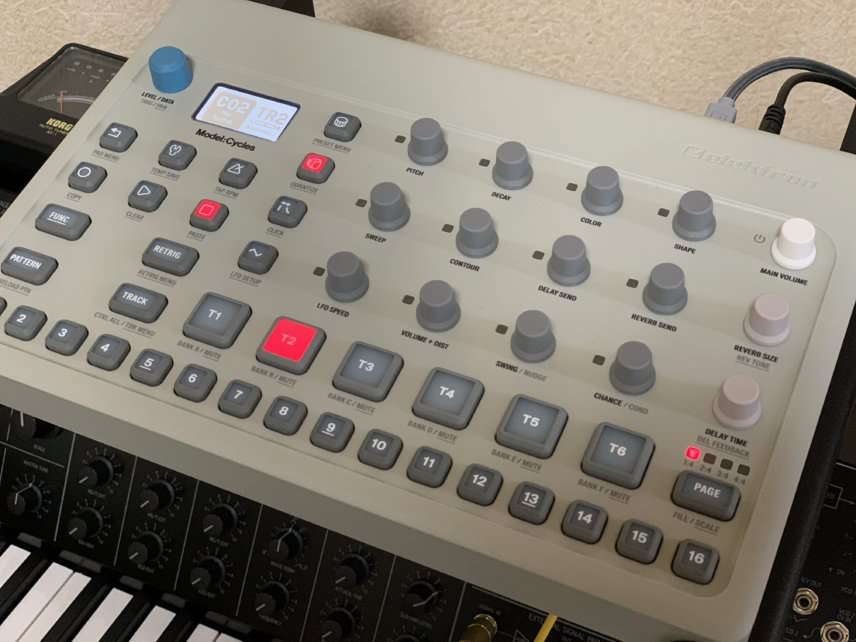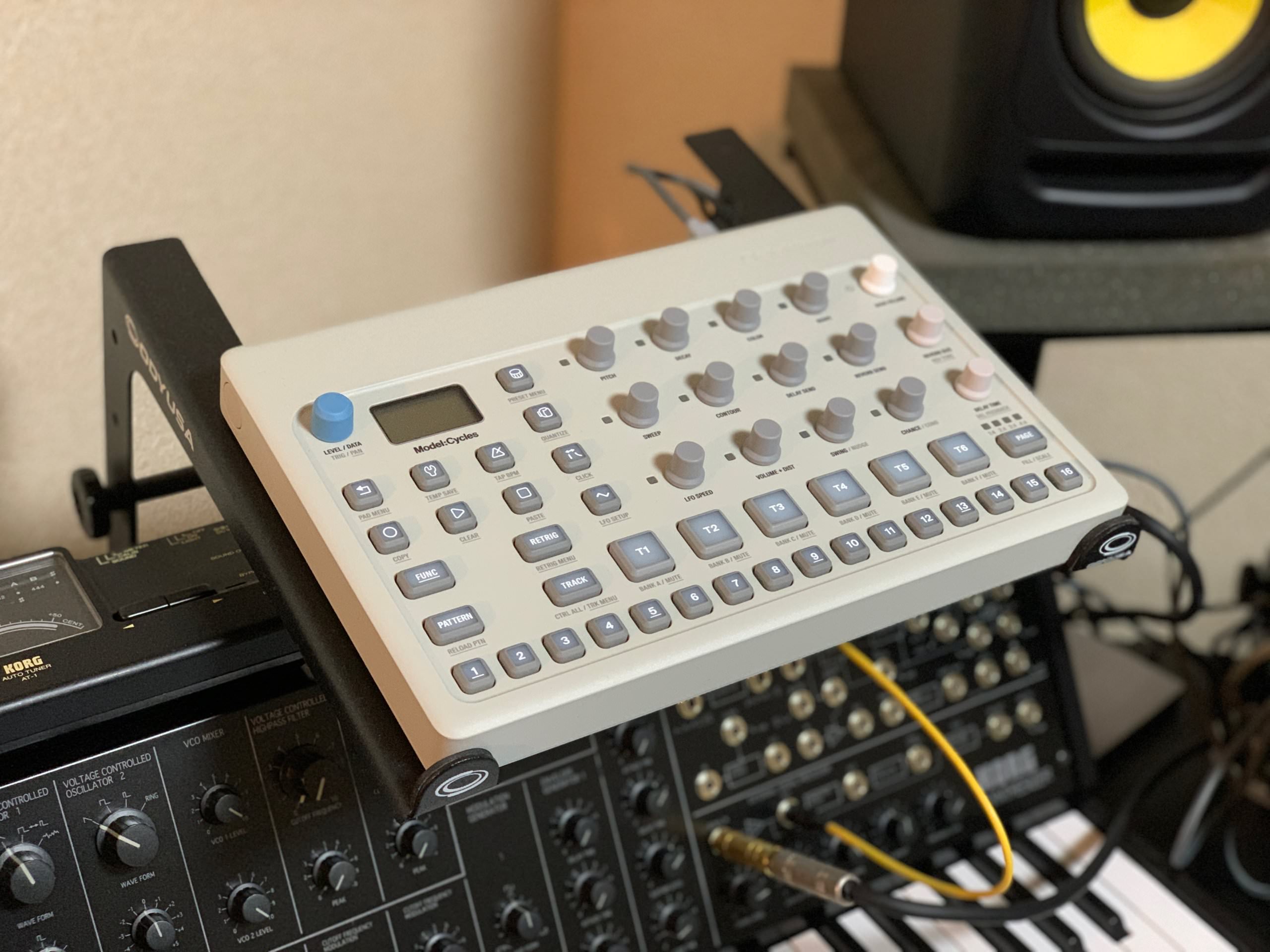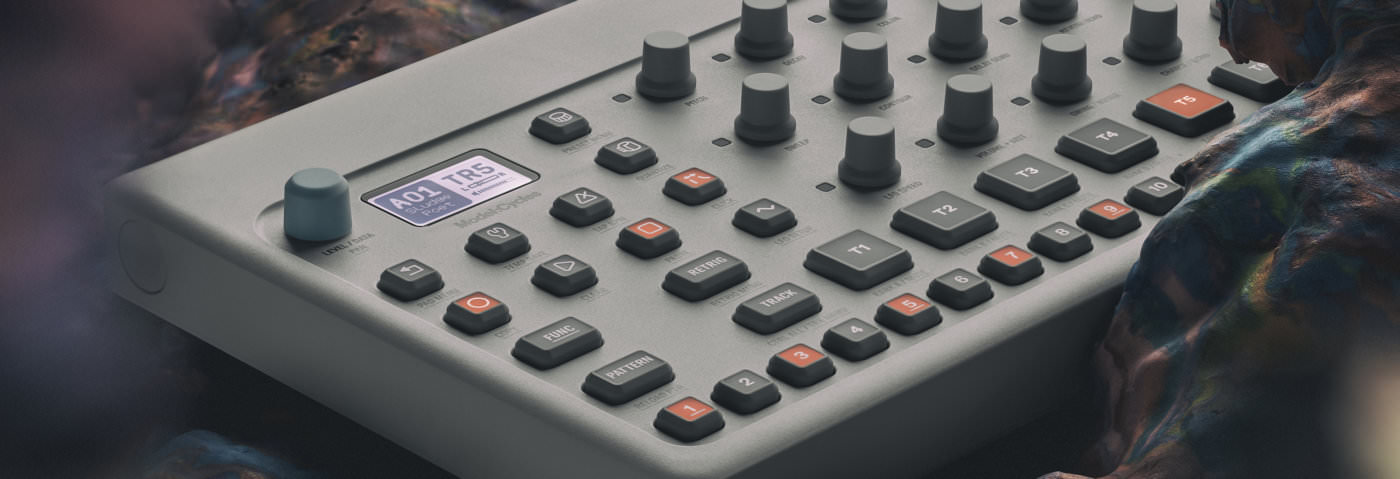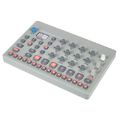Elektron’s latest is another inspiring and fun entry in their Model groovebox series.
There seems to be something of a groovebox Renaissance underway, with recent releases from Roland, Polyend, and Elektron bothering the bank accounts of musicians around the world. Say what you will about the word groovebox (it admittedly does make us cringe), the recent rollout of machines is a far cry from the sample-based rave boxes of the ‘90s.
Elektron first entered the scene in 1999 with its SidStation, a synthesizer based on the Commodore 64 SID chip. This left-field release primed the pump for what would be a string of successful and much-coveted instruments, which mostly followed the blueprint of great sound, deep sequencer, complex architecture, and steep price. Now Elektron has controversially entered the world of the low-priced groovebox, first with 2018’s Model:Samples and most recently with the Model:Cycles.
The Overview
As Model:Samples was based on the previously released Digitakt, so Model:Cycles was born from DNA taken from the FM-based Digitone. It features both drum and melodic sounds, and while it is technically polyphonic, in practice it is primarily a monophonic instrument (more on this later).
The Model:Cycles closely resembles the Model:Samples but in grey this time (and yes, it comes with a sheet of stickers with which to decorate, if that’s your thing). Although it’s plastic, this is not unexpected given the price point (£289) but it in no way feels flimsy or poorly made. The buttons are comfortable and responsive, and the endless rotary encoders are stable with a good amount of resistance. The chassis is lightweight and begs to be taken on the go. The LCD screen is small but easy to read, and the visual feedback is useful and welcome. Power comes via an adapter or micro USB-2 cable, both included. The USB cable can also transmit MIDI and audio information, which worked flawlessly for us. For those using five-pin DIN MIDI, it also comes with two mini MIDI adapters.
The Machines
The Model:Cycles has six Machines, or sound generators, each responsible for a different kind of sound. Kick and Snare do what you’d expect, while Metal handles clangy percussion-like hats and cymbals. Perc is a general, all-purpose percussion sound, something like the FM sound on Arturia’s Drumbrute Impact. The 2-operator Tone and four-voice Chord handle non-percussive sound duties. Model:Cycles is polyphonic in that it can play more than one sound at a time but each Machine is, as previously mentioned, monophonic. The exception is (unsurprisingly) Chord, which acts like a synth stuck in chord memory mode, with every single note generating a customizable chord.

With everything based around FM synthesis, the six Machines tend to generate very electronic sounds. Think buzzy hats, artificial snares, booming bass, and dub techno chords. If you’re looking for soft analogue tones or realistic acoustic drums, you may very well be disappointed. That being said, the sound quality is uniformly excellent. The bass is deep and punchy, the snares crisp and snappy, the musical tones clear and precise.
There are a number of parameters that can be adjusted for each Machine, accessible via the rotary encoders. There are basic pitch and decay, plus four controls (Color, Shape, Sweep, and Contour) that do different things depending on the Machine being controlled. While it can be difficult to know exactly what is going on, spending a little time tweaking the parameters will help understand what each does. Note that Model:Cycles does not give you direct access to the carriers and operators, or even the algorithms, so don’t expect to don a white lab coat and get deep into FM programming. The focus here is firmly on fun. Each Machine also has an LFO with a number of different destinations. Although there’s only one LFO, this is per Machine, so in reality, it’s more like six LFOs.
Each Machine can also be sent through a delay and reverb. Effect controls are global, however, sends can be accessed per Machine through the use of parameter locks, which we’ll cover in the sequencer section next.
The Sequencer
Elektron is known for its sequencers, which can get very deep and complicated. In keeping with the groovebox idea, the sequencer in Model:Cycles manages to retain enough classic Elektron ideas to be useful while still remaining simple enough for a casual user to pick it up quickly. Architecture is organized around projects and patterns. Each project can hold 96 patterns, with each pattern having up to six tracks, each with its own Machine. Note that you can choose any Machine you want for each track, so you could have, say, six Kick tracks if you really wanted.

Tracks are comprised of trigs, which can be either note or parameter information. Note trigs can be entered in grid (step) mode or chromatically live. The 16 trig keys across the bottom of the face double as chromatic keys arranged in semitones, with the root note on pad nine. The lack of keyboard-like markings can make entering notes difficult but an external MIDI keyboard can always be used for this.
Elektron is famous for its parameter locks, parameter changes that occur only on predetermined steps, meaning you can change pitch or other parameter information for just one step. Model:Cycles has this, as well as a number of other locks, such as preset-specific locks, Machine locks, and even conditional locks that change depending on predetermined probabilities. It’s a lot of control and can make for some interesting (and evolving) sequences.
Each track can have up to 64 steps but they all don’t have to be the same length, so it’s possible to make a pattern with one track set to 64 steps and another with only five, allowing for some interesting polymeter patterns should you wish. While there’s no song mode, you can create chains of up to 64 patterns. Users can also send sequencer data can out of the unit to control external gear.
Final Verdict
No matter whether you want to call it a groovebox or not, Model:Cycles is a fun and inspiring instrument. The sequencer is just complicated enough to keep things interesting but not so impenetrable that you’ll be reaching for the manual every two seconds. Elektron did a great job keeping the parameter knobs one-per-function, and while there can be quite a bit of button combo pushing, there’s very little menu diving.
In terms of competition, its nearest rival would have to be the aforementioned Model:Samples (also £289). When deciding between these two, it comes down to which do you need, an FM- or sample-based instrument? Although at these prices, you may as well get both, really.
We would have liked to see more audio out options, especially through the USB audio, where two channels for a six-track machine like this is practically criminal. Some other things we hope will be addressed in future firmware updates include portamento, alternative scales, and an arpeggiator. But these are quibbles. Model:Cycles is an amazing little box that performs way above its price point. Experienced Elektron users may find it a little simple but for the musician new to Elektron, or someone just wanting quick access to electronic sounds, Model:Cycles is a treat.
*Attack Magazine is supported by its audience. When you purchase through links on our site, we may earn an affiliate commission. Learn more.


 Elektron Model:Cycles
Elektron Model:Cycles